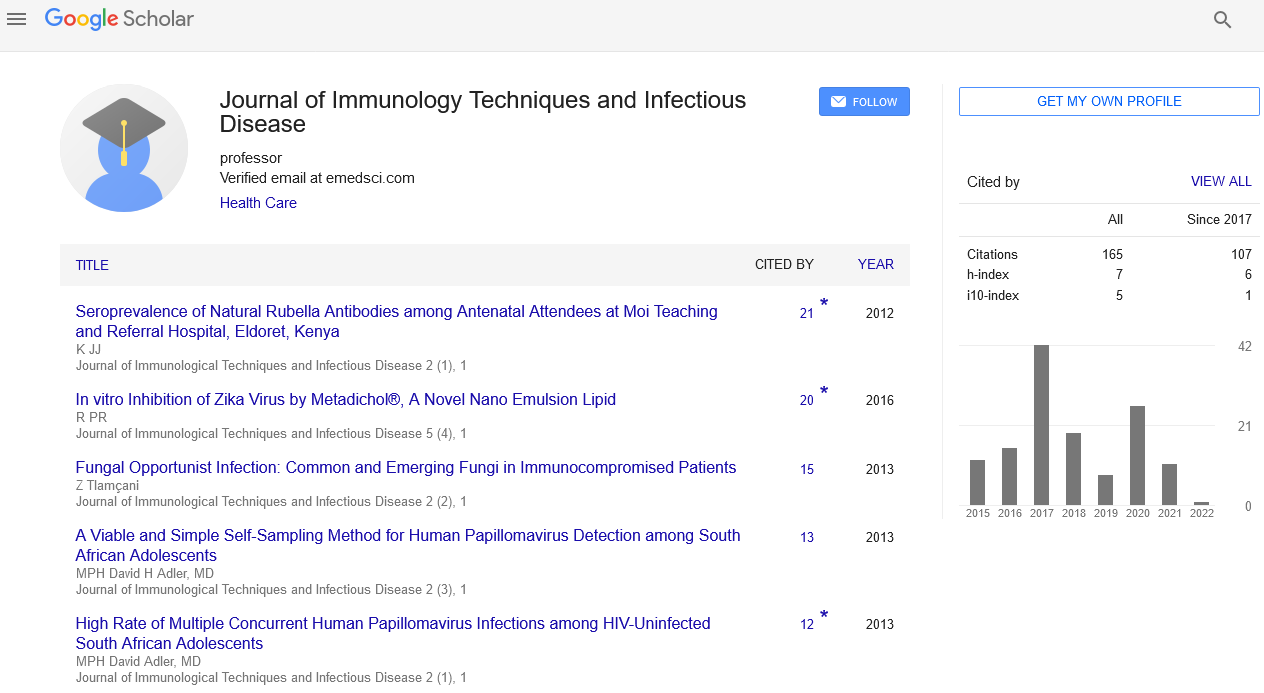Seroepidemiology of HIV-1 and HTLV I\II in Afghanistan
Abbas Ali Husseini
Ankara University, Turkey
: J Immunol Tech Infect Dis
Abstract
Background: Infections caused by HBV, HCV and HDV are global public health problem. Few studies on these diseases have been done among risk groups and less attention has been made to assess the general population. For a better evaluation of HBV, HCV and HDV epidemiologic situation we assessed the Anti-HBc, Anti-HBs, HBsAg, Anti-HCV and Anti-HDV in adults. The results of our study reflect the susceptible population, acquired immunity rate via natural infection and exposure and infection rate among population. Methodology: Totally 492 samples selected randomly from Nangarhar, Herat, Mazar-e Sharif, Kandahar and Kabul with age group of 25-70 years old. Among the participants 269 [54.67%] were female and 223 [45.32%] were male. Anti-HBc, Anti-HBs, HBsAg, Anti-HCV and Anti-HDV were detected by chemiluminescent microparticle immunoassay (CMIA). HBV and HCV viral load was determined also. Results: The HBV exposure rate and infection rate were 149 [30.28%] and 31 [6.3%] respectively. We have not found AntiHDV positive in our HBsAg positive samples. Among the studied individuals 136 [27.64%] samples presented titers of AntiHBs≥10.0 mIU/mL and 59,95% of population was susceptible against HBV. Only 8 [1.62%] persons were positive for AntiHCV, four [50%] of them had a history of exposure to hepatitis B as well. Kandahar shows the lowest rate of prevalence in all markers. Exposure rate in nangarhar and acquired immunity rate in Mazar-e-sharif were the highest compare to other regions. Herat includes the most infected population among all other regions. The acquired immunity due to natural infection rate shows a significant increase with age (P=0.001053) but susceptible rate shows a negative correlation with age (P=0.012701). The viral load of HBV DNA, ranged from 6.1×101 to 1.2× 109 IU/mL and high level viral load rate was 25.8%. There was also a positive correlation between HBsAg and HBV DNA level (P-value=0.00167). In the cases of Anti-HCV positive, viral load was detected in the range from 9.5×100 to 6.7×104 IU/mL and all of them were considered as a low viral load. Conclusion: Most of the population, especially the younger generation, is sensitive and the risk of exposure is high in the population. Public awareness and increased health education are recommended to prevent hepatitis.
Biography
Abbas Ali Husseını has completed his PhD at Ankara University. His research interests lie in the area of infectious disease. He has researched on epidemiology and molecular profile of HIV, HTLV, HBV, HCV and HDV. He has experience of designing different NA isolation kits and HBV, HCV, HIV and CMV quantitative real time PCR Kits.
 Spanish
Spanish  Chinese
Chinese  Russian
Russian  German
German  French
French  Japanese
Japanese  Portuguese
Portuguese  Hindi
Hindi 
